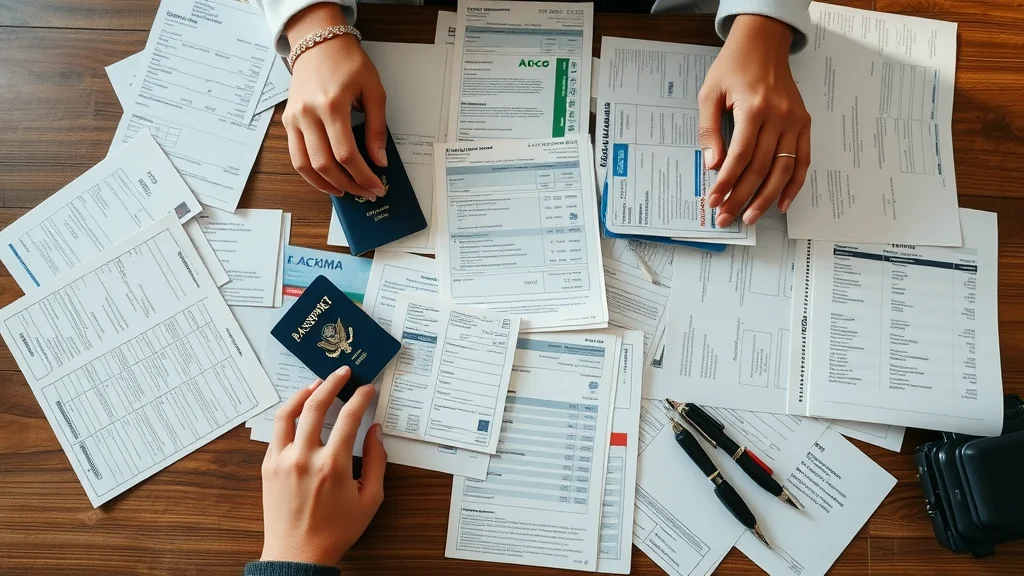Did you know that up to 40% of travel insurance claims are delayed or denied, often due to simple documentation mistakes? Navigating the travel insurance claims process can either be a lifeline during stressful travel mishaps or an added headache if not managed correctly. Whether you’re dealing with lost luggage, trip cancellations, or unexpected medical emergencies abroad, filing a travel insurance claim swiftly and accurately is crucial for a fast payout. In this comprehensive guide, you'll learn how to file a travel insurance claim with confidence, fast-track your reimbursement, and sidestep the pitfalls that slow most travelers down.

Unpacking the Travel Insurance Claims Process: Why Speed Matters
Speed is not just a luxury—it’s essential when it comes to the travel insurance claims process. Travelers purchase insurance expecting timely help in moments of crisis, yet too many wait weeks or even months for a response from their insurance provider. Delays can cause undue stress, missed reimbursements, or even additional travel disruptions. From lost belongings to medical emergencies, the efficiency of your insurance claim process can shape your entire recovery from a trip gone wrong. Understanding why claims move slowly, and how you can influence their speed, is the first step toward ensuring you get paid fast.
Digital platforms and clear communication channels have made it easier than ever to file a travel insurance claim, but common errors still trip up countless travelers. Acting promptly—knowing what information to provide, how to document your losses, and whom to contact—reduces the risk of rejection. By learning how the claims process actually works, and what your insurance provider expects, you can shift the odds in your favor and minimize financial headaches long after your bags are unpacked.
Startling Statistics: Most Travel Insurance Claims Go Unpaid—Here’s Why
Despite the safety net that travel insurance promises, industry research shows a striking number of claims are either delayed, underpaid, or outright denied. The most frequent causes include incomplete documentation, misunderstanding of the insurance policy coverage, or filing for non-covered reasons. According to recent reports, nearly half of all travelers who file a claim face hurdles due to missing paperwork or insufficient evidence to support their claim. For example, not providing original receipts or detailed incident reports can doom your case—regardless of your actual loss. Being proactive with documentation and fully understanding the scope of your insurance cover can dramatically improve your chances of a successful, speedy payout.
The Role of Fast Travel Insurance Claims in Traveler Confidence
Knowing that your travel insurance provider can process claims quickly isn’t just a convenience—it’s a vital part of feeling secure while traveling. Delays and bureaucratic hurdles erode trust, while quick resolutions foster loyalty and peace of mind. In fact, surveys reveal that travelers who’ve experienced a prompt claim approval are three times more likely to recommend their travel insurance company to others, versus those who endured a lengthy claims process. Fast claims support strengthens the entire value proposition for travel insurance, reinforcing its purpose: to swiftly restore comfort, stability, and financial protection when your journey takes an unexpected turn.

What You'll Learn About the Travel Insurance Claims Process
- Key steps in the travel insurance claims process
- Common documentation required for a travel insurance claim
- How to file a travel insurance claim for maximum speed and efficiency
- Ways to avoid common travel insurance claim pitfalls
- Tips for communication with your travel insurance provider
- How to accelerate your insurance claim decision
Understanding the Basics: What is the Travel Insurance Claims Process?
Definition of Travel Insurance Claims and the Claims Process
Simply put, a travel insurance claim is your official request for reimbursement or assistance from your insurance provider after you experience a travel-related loss or disruption covered by your insurance policy. The claims process consists of reporting the incident, submitting supporting documentation, and awaiting a decision. Each insurance company outlines specific procedures, but all share the same goal: validating your claim against the insurance cover you purchased and distributing prompt compensation or aid for covered reasons like medical emergencies, trip cancellations, or lost luggage. Knowing the stages and requirements of a typical claim process can save you time and hassle when you need support the most.
Why You Might Need to File a Travel Insurance Claim
Travel rarely goes exactly as planned, making travel insurance an important safeguard. You might need to file a travel insurance claim if you encounter events such as trip cancellation or interruption due to illness, weather delays, theft, baggage loss, or emergency medical treatment abroad. These are all common covered reasons under most travel insurance policies. Whether you’re facing minor inconveniences or major disasters, your ability to quickly file a claim often determines both your financial recovery and the smoothness of your journey home. Timely and accurate claims filing helps demonstrate the necessity of reimbursement, letting your insurance provider process payment more efficiently.

Common Circumstances for Making a Claim
The most frequent reasons for making a claim include trip cancellation or interruption (often due to a family emergency or illness), lost or delayed baggage, urgent medical needs while traveling, and theft or damage to personal belongings. In addition, some insurance covers extend to missed connections, natural disaster disruptions, or emergency evacuations. Understanding which scenarios qualify as covered reasons under your travel insurance policy is essential—submitting a claim for a non-covered circumstance is a leading cause of denial. Always consult your policy’s list of inclusions and exclusions so you’re prepared before and during your travels.
Step-by-Step Guide to the Travel Insurance Claims Process
Step 1: Reviewing Your Travel Insurance Policy
Before you can file a travel insurance claim, take time to carefully review your insurance policy. Policies can vary significantly between insurance providers and types of coverage. Pay close attention to covered reasons, documentation requirements, exclusions, and specific timelines for notification and submission. This upfront effort helps you set realistic expectations, gather the right paperwork, and avoid unnecessary frustration down the line. Knowing exactly what your insurance covers also makes it easier to advocate for yourself if your claim is challenged or delayed—empowering you to communicate confidently with your provider.

Step 2: Gathering Documentation for Your Insurance Claim
A successful insurance claim hinges on the paperwork you provide. Essential documents typically include your policy number, proof of travel (like itineraries or boarding passes), receipts for incurred costs, police reports for theft, and medical statements for health-related claims. Each type of claim may also require additional evidence: for trip cancellation, you’ll often need a doctor’s note or death certificate; for lost luggage, an airline report or baggage tag documents. Create a dedicated folder (physical or digital) for each trip—keeping track of receipts, confirmations, and correspondence. This organized approach ensures you can quickly support your claim and respond to any requests for additional information from your insurance provider.
Step 3: File a Travel Insurance Claim Online or Offline
When you’re ready to make a claim, most travel insurance providers now offer streamlined online portals alongside traditional paperwork. To file a travel insurance claim online, log into your insurer’s website, select your type of claim, and upload all necessary documents. Some providers may require you to fill out a detailed online form, while others accept email attachments. For those preferring paper or needing specific forms, download the claim documents, fill them out completely, and mail or fax them as instructed. No matter your method, double-check for missing signatures, data entry errors, and completeness—missing information is a leading cause of processing delays.

Step 4: Submit Your Claim to the Insurance Provider
Once you have prepared your documentation, it’s time to submit your claim to your insurance provider. Whether uploading files online or mailing in your claim form, ensure that all paperwork is legible and includes your policy number. Many insurers will send you a confirmation email or reference number—save this information for your records. Timely submission is critical: many travel insurance policies require that you notify the company within a certain number of days after an incident. Submit your claim as soon as possible, and keep a backup of every document you provide to reduce risk if anything goes missing or is misplaced during processing.
Step 5: Claim Assessment and Communication from Your Provider
After you submit your claim, your insurance provider will assess the paperwork, often contacting you for further details or clarification. This stage involves verifying your coverage, reviewing circumstances, and confirming all supporting documentation. Stay responsive: prompt, clear communication can mean the difference between a rapid payout or frustrating hold-ups. If the insurer requests additional information or original documents, reply quickly and keep a copy of every interaction. Maintaining a record of all correspondence (emails, messages, call notes) can help if you need to follow up or escalate your case later in the claims process.
Step 6: Decision and Payment in the Travel Insurance Claims Process
Once assessment is complete, your insurance company will communicate their decision. If your claim is approved, you’ll typically receive payment directly to your bank account or as a mailed check, depending on your provider’s policies. In some complex cases, partial payments or requests for clarification may arise. If your claim is denied, carefully review the reasoning in the insurer’s response; you may have the opportunity to appeal, supply missing evidence, or offer additional context. Always retain copies of decision letters and payment confirmations for your records.
Key Documents Required in the Travel Insurance Claims Process
- Proof of travel (tickets, itineraries)
- Medical reports (if applicable)
- Police or incident reports (for theft/loss)
- Receipts for incurred costs
- Completed claim form
| Type of Claim | Required Documents |
|---|---|
| Medical Emergency | Proof of travel, medical reports, hospital bills, receipts. |
| Trip Cancellation | Proof of travel, cancellation confirmation, doctor's note/death certificate, receipts. |
| Baggage Loss | Proof of travel, baggage claim ticket, airline reports, receipts. |
| Theft or Loss | Proof of travel, police report, receipts, description of items lost. |
| Travel Delay | Proof of travel, delay statements from airlines, receipts for additional expenses. |

Common Mistakes to Avoid When Making a Travel Insurance Claim
- Not notifying your travel insurance provider immediately
- Missing documentation
- Incomplete or inaccurate claims forms
- Failing to understand policy coverage
- Not keeping copies of submitted documents
These mistakes are preventable but all too common. Waiting days (or weeks) to file a travel insurance claim can disqualify you under your policy’s time limits. Submitting forms without double-checking for errors—or omitting crucial evidence like receipts—can cause outright rejection. Not reading your insurance policy is a surefire way to encounter unwelcome surprises. Lastly, be sure to keep digital copies of everything you send or receive; you may need these if you must clarify or dispute any part of the process.
Top Tips to Speed Up the Travel Insurance Claims Process
- Double-check details before you file a travel insurance claim
- Submit your claim as soon as possible
- Maintain clear communication with your insurance provider
- Follow up regularly on your claims process
- Organize and keep copies of all correspondence
Pace is everything when you want your insurance claim settled quickly. Carefully review all contact information, policy numbers, and documentation for typos or omissions before sending. Promptly file a travel insurance claim after your incident occurs to stay within the eligibility window. Stay connected with your insurance provider—sometimes a proactive phone call or email nudge gets your claim moving. Finally, keeping comprehensive files (even digital photos of paper receipts) gives you leverage and clarity if you ever need to reference or dispute your claim in the future.
How Do Travel Insurance Claims Work? (People Also Ask)
Overview of How Travel Insurance Claims Work
The travel insurance claims process begins when you notify your provider of an incident, gather and submit documentation, and then await assessment and a decision. Each claim follows roughly the same steps: notification, paperwork, evaluation, and outcome (approval, denial, or request for more info). The more organized and prompt you are in supplying details, the smoother and quicker the process. If your type of claim is covered and fully documented, payment typically arrives without hassle.
A Typical Example of a Travel Insurance Claim
Imagine your luggage goes missing upon arrival. You notify the airline and obtain a loss report, then contact your insurance provider to file a claim. You submit your policy number, receipt of expenses to replace necessities, and a copy of the airline’s report. Your insurance company reviews the documents, asks for any needed clarification, and, once satisfied, processes your payment. This scenario illustrates how clarity, completeness, and communication accelerate the claims process from start to finish.
What Are the 4 Phases of the Claim Process? (People Also Ask)
Explanation of the Four Key Phases: Notification, Documentation, Assessment, Settlement
1. Notification: This is where you alert your insurance provider of the incident as soon as it happens. 2. Documentation: You gather and provide all required paperwork to support your claim. 3. Assessment: The insurer reviews your submission, asking for any additional information needed. 4. Settlement: Based on their findings, your insurance company pays out, requests further evidence, or informs you of denial.
Where to Focus for a Fast Claims Process
The phases most within your control—documentation and notification—are where you should focus. Quickly reporting incidents and meticulously supplying all relevant documentation drastically accelerates the entire claim process. Clear communication and follow-up with your insurance provider can resolve holdups, ensuring you get paid fast.
How Long Does It Take For a Travel Insurance Claim to Process? (People Also Ask)
Typical Timelines for the Claims Process Across Major Providers
Most major travel insurance companies aim to process simple claims within 10–15 business days once all documents are received. Complex claims (involving medical evaluations, police investigations, or large sums) may take several weeks. Keeping your paperwork organized and responding quickly to any additional requests from the insurance provider can shave days—or even weeks—off your expected wait. If you haven’t heard back in the stated timeline, always follow up with your insurer for an update on your claims process.
What to Do if Your Travel Insurance Claim is Delayed
If your claim is delayed beyond stated processing times, contact your insurance provider for a status update and clarification. Reference your claim number and request a specific timeline. Submit any missing documents promptly and ask for confirmation that your case is under active review. Persistent delays may be escalated to an ombudsman or consumer affairs office if necessary.
How to Get Travel Insurance to Pay Out (People Also Ask)
Expert Advice for Successful Travel Insurance Claims
Experts agree: “Submitting a well-documented claim is the fastest way to get reimbursed by your travel insurance provider.” Ensure your documentation matches your policy requirements and double-check all forms for accuracy. Maintain polite but persistent communication with your insurance company, and don’t hesitate to ask for clear timelines or explanations if you hit a snag. If your claim is denied, request a detailed reason and provide any additional evidence if you choose to appeal.
For a step-by-step animated guide to filing a travel insurance claim and getting paid fast, watch the visual explanation above, which details each phase from notification to payout.
Quotes from Industry Experts on Navigating Travel Insurance Claims
"Submitting a well-documented claim is the fastest way to get reimbursed by your travel insurance provider." – Travel Insurance Expert
FAQ: Travel Insurance Claims Process
-
What can I do if my travel insurance claim is denied?
If your claim is denied, review the insurer’s reasoning and submit a formal appeal if you have new evidence or believe there has been a misunderstanding. Many companies have an internal appeals process; be sure you use it within the specified time frame. -
Can I appeal a rejected insurance claim?
Yes, most insurance providers offer a clear appeals process. Gather more supporting documents or clarification, and explain why you believe your claim should be covered. -
Do I need original documents when making a claim?
Most insurers require clear scans or photos for initial review, but some may request original documents (for medical reports or police statements) before finalizing your payout. Always keep originals until your claim is settled. -
Are there deadlines for submitting a travel insurance claim?
Yes—most insurance policies detail stringent notification and filing deadlines, often 20–30 days from the incident. Missing these windows can disqualify your claim.
Key Takeaways for a Faster Travel Insurance Claims Process
- Understanding your travel insurance policy is crucial
- Organization and thorough documentation speed up claims
- Proactive communication with your provider is essential
Next Steps: Ensure a Smooth Travel Insurance Claims Experience
- Review your current and future policies
- Keep a digital record of all travel documents
- Know your insurance provider’s preferred claims process
- Submit all required documentation promptly

Final Thoughts on Mastering the Travel Insurance Claims Process
Summarizing the Path to a Fast, Successful Travel Insurance Claim
Staying informed, organized, and communicative are your keys to a quick and successful travel insurance claims process. Take control, file promptly, and you’ll travel with confidence.
 Add Row
Add Row  Add
Add 


Write A Comment